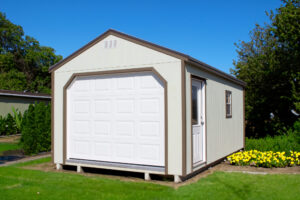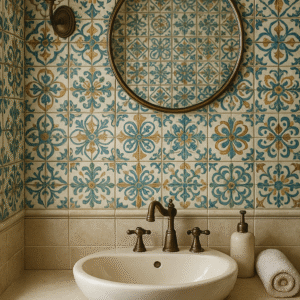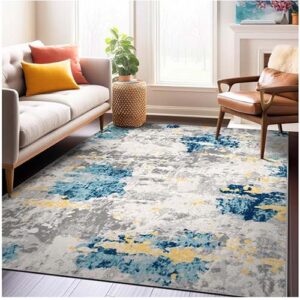A custom shed is more than just a backyard structure—it’s an extension of your home’s purpose, personality, and property value. Whether you’re planning a shed for storage, a home office, a workshop, or a creative retreat, one decision can make or break its long-term performance: choosing the right custom shed materials.
Your shed’s durability, aesthetics, and overall cost depend heavily on the materials used during construction. From the frame and siding to the roof and flooring, each component plays a vital role in ensuring your shed looks beautiful and stands strong for years. This guide will help you understand which materials offer the best performance for your needs and budget—and why selecting the right ones matters.
Why Material Choice Matters in Custom Sheds
When designing a shed that meets both function and form, material selection should be one of your top priorities. Poor materials can lead to faster deterioration, higher maintenance costs, and safety issues over time. On the flip side, high-quality custom shed materials deliver better insulation, resistance to weather, and curb appeal, all while reducing long-term expenses.
It’s also about aligning your choices with your lifestyle and goals. A shed designed for seasonal use might require a different approach than one you plan to use year-round. Similarly, your region’s climate—hot, cold, wet, or dry—will influence the best material combinations for strength and longevity.
Wood: The Classic Choice for Natural Beauty
Wood remains one of the most popular custom shed materials, primarily due to its timeless appearance and easy workability. Whether it’s pressure-treated pine, cedar, or redwood, wood siding gives sheds a natural, rustic aesthetic that complements most home styles.
Cedar and redwood are particularly favored for their natural resistance to rot, pests, and decay. These woods do not require chemical treatments and age beautifully with time. Pressure-treated pine is a more budget-friendly option, often used for framing and flooring due to its strength and moisture resistance.
However, wood requires regular maintenance—staining, sealing, and occasional repairs—to protect against warping or weather damage. It’s ideal for homeowners who value appearance and don’t mind putting in a bit of upkeep to maintain their shed’s charm.
Vinyl: Low Maintenance With a Clean Look
If your goal is to install a shed and forget about it for a while, vinyl is one of the most durable and low-maintenance custom shed materials on the market. Available in various colors and textures, vinyl siding can mimic wood grain while offering superior weather resistance and insulation.
Vinyl doesn’t rot, rust, or require painting, making it especially suited for homeowners in humid or rainy environments. It’s easy to clean with a hose and holds up well against UV exposure.
While vinyl sheds can be more expensive upfront than some wood options, the savings in maintenance and repair often offset the initial cost over time. A shed with long-lasting, low-maintenance materials like vinyl siding is a smart investment for anyone seeking durability with minimal upkeep.
Metal: Strength and Modern Appeal

Metal sheds, typically made from steel or aluminum, have grown in popularity thanks to their unmatched strength and pest resistance. These custom shed materials are great for those who prioritize security and longevity, especially in areas with extreme weather or high wildlife activity.
Steel offers the highest durability but can be prone to rust if not galvanized or treated, making aluminum a lightweight, corrosion-resistant alternative. Metal siding and roofing can provide a sleek, modern aesthetic that fits contemporary landscapes.
One downside is that metal can amplify heat and cold, making it less comfortable inside without added insulation. Additionally, dents or scratches can compromise its protective finish. Still, for a secure storage space or utility shed, metal remains a tough, long-lasting option.
Engineered Wood: A Budget-Friendly Hybrid
Engineered wood products like LP SmartSide combine the natural look of wood with the strength of treated materials. These custom shed materials are manufactured using wood strands and resins that are compressed and treated for enhanced durability.
Engineered wood is resistant to moisture, fungal decay, and pests, and it comes pre-primed or painted for convenience. It’s often more affordable than natural wood while still providing the warmth and character that wood enthusiasts appreciate.
It’s a great middle-ground solution for homeowners who want the look of wood but need something that lasts longer and costs less. Just be sure to purchase high-quality engineered wood from a reputable source to ensure longevity.
Roofing Options: Protecting From the Top Down
The roof is your shed’s first defense against the elements. Choosing the right roofing material can make a significant difference in how well your shed stands up to rain, snow, and sun.
- Asphalt shingles are the most common due to their affordability and easy installation. They offer decent protection and a traditional look.
- Metal roofing is more durable and energy-efficient, reflecting heat and lasting up to 50 years with proper care.
- Wood shingles can add rustic charm but require more maintenance and are less fire-resistant.
- Rubber or synthetic roofing is another emerging trend, offering flexibility, waterproofing, and long-term performance for custom-built sheds.
Your roofing material should complement the rest of your shed’s structure and reflect your maintenance tolerance and climate.
Flooring and Foundation Materials
Don’t overlook the floor when considering your custom shed materials. A solid foundation ensures stability and protects your investment from moisture and ground movement.
- Pressure-treated plywood is the standard flooring choice, offering durability and water resistance.
- Concrete slabs provide the most stable base and are ideal for heavier sheds or those intended for vehicle storage.
- Composite flooring can resist rot and insects and may be a better fit for elevated sheds or high-moisture environments.
No matter the material, it’s essential to keep the shed elevated or well-drained to prevent water pooling underneath.
Balancing Cost and Long-Term Value
Budget is always a factor when selecting custom shed materials, but think beyond the upfront cost. A slightly more expensive material that lasts longer and requires less maintenance could save you thousands over the lifespan of your shed.
For example, spending more on metal roofing or vinyl siding now may reduce your need for frequent repairs and repainting in the future. Likewise, investing in quality flooring and roofing prevents structural issues that could arise in just a few years.
Remember, your shed is more than a purchase—it’s an investment. Choosing quality materials tailored to your needs pays off in durability, aesthetics, and comfort.
The Right Materials Make All the Difference
When building your dream shed, the material selection is as important as the design. With the right custom shed materials, you can build a structure that’s not only functional and beautiful but also able to withstand the test of time.
Whether you prioritize natural beauty, minimal maintenance, or rugged durability, there’s a combination of materials out there for you. Consult with experts to find the perfect match for your style, budget, and local climate. A trusted provider like a professional shed builder offers a range of custom shed materials and designs that suit every vision—from classic wooden cottages to ultra-modern metal structures.



